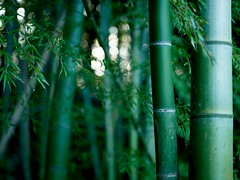The Sustainable Printing blog hosted on Today.com recently posted a great piece covering the five most popular, tree-free green printing papers available today.
Not all of them are widely available or cost-effective, but a few are catching on in the green printing industry as viable alternatives to traditional tree-fiber.
Hemp Paper
It grows fast, has incredibly high yields and it’s durable — making hemp an incredibly versatile material. For most commercial applications, hemp is combined (usually in a 1:3 ratio) with recycled tree-derived paper stock.
Unfortunately, this process of recycling, washing and bleaching recycled stock and then combining it with hemp fiber uses a lot of water, electricity and resources. If your goal is sustainable printing, I recommend investigating both how this particular paper was manufactured and the size of the manufcaturer’s ecological footprint.
Cotton Paper
Cotton paper is bright, white and beautiful to work with. It feels amazing between your fingertips and it actually lasts much longer than traditional tree paper. However, cotton paper is also exceptionally expensive.
There’s also the sustainable printing argument that growing that much cotton to sustain a paper industry would require an epic amount of farmland and more resources (watering, maintaining, processing) than tree-derived papers. So, while cotton may be green paper in small amounts, it doesn’t scale well into mass production.
Kenaf Paper
Like hemp, kenaf grows quickly and produces a high yield. And because kenaf is naturally white, it requires significantly less bleaching than paper made from tree fibers. Today, kenaf is poised to be the next big green paper in the sustainable printing industry.
Bamboo Paper
I’ve heard of bamboo socks, but did you know they also make bamboo paper? Though not widely available, bamboo paper is being developed and marketed as a green paper. It’s expensive, but if it catches on, the price could come down.
Rock Paper
No, not Rock Paper Scissors. Rock paper is essentially made from limestone and will eventually break down over time, particularly when exposed to the elements. There’s no bleaching involved, but don’t expect long term durability with this green paper choice.
Photo: Joi (bamboo)
Photo: Ingermaaike2 (hemp yarn)

Garry – Thanks again for referencing one of my posts! You bring up some great points on the sustainability factors. I will put a link back to this post from mine so that my readers can see your thoughts as well. – Melanie
Garry – Thanks again for referencing one of my posts! You bring up some great points on the sustainability factors. I will put a link back to this post from mine so that my readers can see your thoughts as well. – Melanie